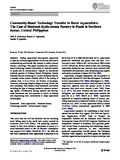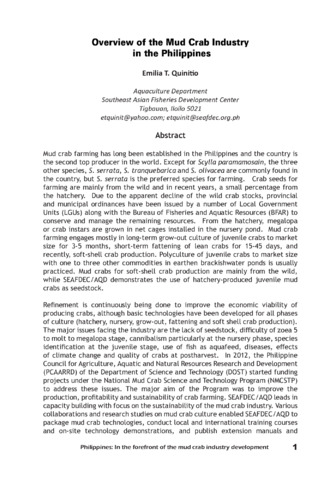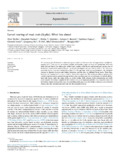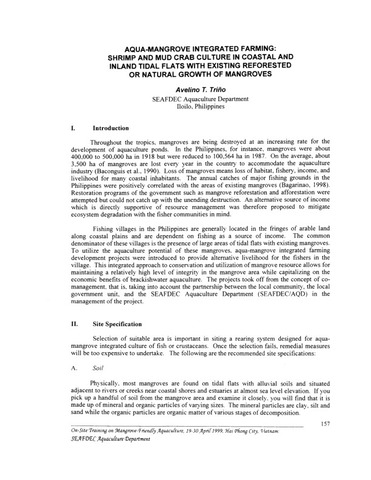Community-based technology transfer in rural aquaculture: The case of mudcrab Scylla serrata nursery in ponds in northern Samar, central Philippines
Share
Abstract
Finding aquaculture development approaches to open up livelihood opportunities for the rural poor and in mainstreaming smallholder fish farmers to reduce poverty remain a challenge. This paper examines the community-based technology transfer mechanism of mudcrab nursery in ponds and its socioeconomic impacts on smallholder mudcrab growers in Northern Samar, Philippines. Results indicated that the technology is a viable enterprise done by a straight culture system method, which is the rearing of crablets from <1.0 to 4.0 cm for 42 days, or by-phases. However, technology adoption hinges on many factors like area ownership, farm distance from household, and market including the type of strategy needed to enhance technology uptake. Collaboration among research and development institutions and local partners is critical in training and empowering rural communities to adopt aquaculture technologies.
Suggested Citation
Baticados, D. B., Agbayani, R. F., & Quinitio, E. T. (2014). Community-based technology transfer in rural aquaculture: The case of mudcrab Scylla serrata nursery in ponds in northern Samar, central Philippines. AMBIO: A Journal of the Human Environment , 43(8), 1047-1058. https://doi.org/10.1007/s13280-014-0528-5
Subject
Taxonomic term
Collections
- AQD Journal Articles [1249]
Related items
Showing items related by title, author, creator and subject.
-
Overview of the mud crab industry in the Philippines
Quinitio, Emilia T. (Aquaculture Department, Southeast Asian Fisheries Development Center, 2017)Mud crab farming has long been established in the Philippines and the country is the second top producer in the world. Except for Scylla paramamosain, the three other species, S. serrata, S. tranquebarica and S. olivacea ... -
Larval rearing of mud crab (Scylla): What lies ahead
Waiho, Khor; Fazhan, Hanafiah; Quinitio, Emilia T.; Baylon, Juliana C.; Fujaya, Yushinta; Azmie, Ghazali; Wu, Qingyang; Shi, Xi; Ikhwanuddin, Mhd; Ma, Hongyu (Elsevier, 2018)The increasing global demand for mud crabs (genus Scylla) and threats to the wild populations highlight the urgency of fully rearing them in captivity. Despite considerable progress in mud crab production, most crab farms ... -
Aqua-mangrove integrated farming: Shrimp and mud crab culture in coastal and inland tidal flats with existing reforested or natural growth of mangroves
Triño, Avelino T. (Aquaculture Department, Southeast Asian Fisheries Development Center, 2000)Throughout the tropics, mangroves are being destroyed at an increasing rate for the development of aquaculture ponds. In the Philippines, for instance, mangroves were about 400,000 to 500,000 ha in 1918 but were reduced ...




